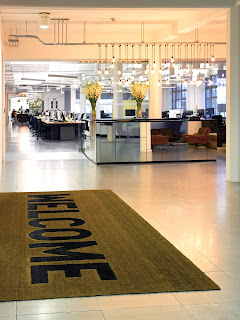Here’s a scary thought.
Anyone under 15 can’t remember dial-up internet. (Those long hours spent trying to download anything accompanied only by the brrr-brrr-ting-ting-ting-ting of the modem plugged into the phone socket.)
Anyone under 10 can’t remember life without 3G. (That dream that one day we’d be able to access internet and email on our phones, to be set free from our offices and work anywhere at any time.)
Anyone born after next year won’t remember life without 4G. (“Daddy, in the old days, did you really have to wait to download films on your phone?” “Mummy, what’s ‘buffering’?”)
Yes, for all their amazingness, our phones, with the 3G that we adored so much only a few short years back, will soon seem like the equivalent of a black and white TV with a crappy aerial you have to tweak to get a decent picture.
Today EE introduced 4G to the UK. (That’s a lot of acronyms in that there sentence.)
We were treated to demonstrations of its speed in comparison to 3G.
And it is indeed much faster.
Sodding fast in fact.
The other networks of course were swift to point out that what EE have isn't really ‘the best kind of 4G’ and that theirs will be even more sodding fast when they launch next year.
Whatever.
Today was a momentous day.
One which means that soon enough, like always happens when new technology is introduced that truly supersedes the old, we’ll forget just how amazing what we have now is, just how lucky we are to have it, and life will become 'un-livable' without something we couldn’t even imagine we’d need or might even exist only a few weeks earlier.
And we'll love it. And cherish it. And value it.
Right up until 5G comes along...
Right up until 5G comes along...




